Long-Term Spatiotemporal Analysis of Crop Water Supply–Demand Relationship in Response to Climate Change and Vegetation Greening in Sanjiang Plain, China
Abstract
1. Introduction
2. Materials and Methodology
2.1. Materials
2.1.1. Study Area
2.1.2. Meteorological Forcing Dataset
2.1.3. Remotely Sensed Data
2.2. Methods and Models
2.2.1. Determination of Crop Water Demand (CWD)
2.2.2. Hydrological Model
2.2.3. Determination of IWR
2.2.4. CropWat Model and Statistical Analysis
2.2.5. Calculating the Irrigation Water Scarcity Index (IWSI) on a Grid Level
3. Results
3.1. Spatial-Temporal Variation of Climate and Vegetation Factors
3.1.1. Changes in Meteorological Factors
3.1.2. Changes in LAI
3.2. Spatial-Temporal Variation of CWD and Rainfed AET
3.3. Spatial-Temporal Variation of IWR
3.4. Evaluation of Effective Precipitation and Irrigation Requirement
3.5. Water Demand and Supply Risks Under Climate Change and Vegetation Greening
3.6. Dominant Factors Influencing IWR Variation
4. Discussion
4.1. Influence of Meteorological Factors on IWR
4.2. Influence of Vegetation Greening on IWR
4.3. Policy Recommendations for Optimizing Crop Layout in the SJP
- (1)
- Scientific zoning of crop types: In the western regions of the SJP where there is a poor mismatch between agricultural water demand and rainfed water resources, it is advisable to allocate more agricultural areas for C4 crops such as maize and sorghum. These C4 crops are more adapted to water-deficient conditions and can thrive under high temperatures and strong sunlight. Normally, C4 crops have the ability to partially close their stomata during periods of drought, which helps to reduce transpiration and minimize water loss. As a result, the reduction in the photosynthetic rate is comparatively smaller, leading to improved water use efficiency in C4 crops. These traits provide C4 crops with a distinct advantage over C3 crops in the SJP region. In contrast, in areas with relatively ample water resources like the Jiansanjiang Agricultural Farming Zone in the northeast region, it is more suitable to allocate more agricultural areas for C3 crops such as rice, spring wheat, and soybeans. These C3 crops typically require higher water inputs due to their origins in tropical regions and their reliance on a different photosynthetic pathway.
- (2)
- In regions with relatively abundant water resources, particularly in the eastern areas, initiatives should be undertaken to endorse policies incentivizing water conservation among farmers. This includes measures to reduce irrigation intensity, promote deficit irrigation techniques, and optimize the utilization of rainfed resources. Conversely, in the central and western regions where water availability is comparatively constrained, it is advisable to implement comprehensive irrigation and drainage initiatives. These projects should leverage the beneficial water retention characteristics inherent to black soil. Adjustments to irrigation allocations should be meticulously tailored to meet the specific water requirements of crops in these regions, augmenting irrigation planning and integrating cohesive cultivation practices to effectively address crop water needs throughout their growth stages.
4.4. Limitations and Future Prospects
5. Conclusions
Author Contributions
Funding
Data Availability Statement
Acknowledgments
Conflicts of Interest
References
- Li, Z.; Liu, M.; Hu, Y.; Xue, Z.; Sui, J. The spatiotemporal changes of marshland and the driving forces in the Sanjiang Plain, Northeast China from 1980 to 2016. Ecol. Process. 2020, 9, 24. [Google Scholar] [CrossRef]
- Li, D.; Zhai, Y.; Lei, Y.; Li, J.; Teng, Y.; Lu, H.; Xia, X.; Yue, W.; Yang, J. Spatiotemporal evolution of groundwater nitrate nitrogen levels and potential human health risks in the Songnen Plain, Northeast China. Ecotoxicol. Environ. Saf. 2021, 208, 111524. [Google Scholar] [CrossRef] [PubMed]
- Zhang, Y.; Zang, S.; Sun, L.; Yan, B.; Yang, T.; Yan, W.; Meadows, M.E.; Wang, C.; Qi, J. Characterizing the changing environment of cropland in the Songnen Plain, Northeast China, from 1990 to 2015. J. Geogr. Sci. 2019, 29, 658–674. [Google Scholar] [CrossRef]
- Chen, H.; Zhang, W.; Gao, H.; Nie, N. Climate Change and Anthropogenic Impacts on Wetland and Agriculture in the Songnen and Sanjiang Plain, Northeast China. Remote Sens. 2018, 10, 356. [Google Scholar] [CrossRef]
- Guo, Y.; Song, C.; Zhang, J.; Wang, L.; Sun, L. Influence of wetland reclamation on land-surface energy exchange and evapotranspiration in the Sanjiang plain, Northeast China. Agric. For. Meteorol. 2021, 296, 108214. [Google Scholar] [CrossRef]
- Li, Q.; Sheng, B.; Huang, J.; Li, C.; Song, Z.; Chao, L.; Sun, W.; Yang, Y.; Jiao, B.; Guo, Z.; et al. Different climate response persistence causes warming trend unevenness at continental scales. Nat. Clim. Change 2022, 12, 343–349. [Google Scholar] [CrossRef]
- Wen, K.; Ren, G.; Ren, Y.; Cao, L.; Qin, Y.; Zhang, P.; He, J.; Xue, X.; Sun, X. Long-term changes in surface air temperature over the Chinese mainland during 1901-2020. Clim. Res. 2023, 90, 95–115. [Google Scholar] [CrossRef]
- Quinteiro, P.; Rafael, S.; Villanueva-Rey, P.; Ridoutt, B.; Lopes, M.; Arroja, L.; Dias, A.C. A characterisation model to address the environmental impact of green water flows for water scarcity footprints. Sci. Total. Environ. 2018, 626, 1210–1218. [Google Scholar] [CrossRef]
- Rigden, A.J.; Mueller, N.D.; Holbrook, N.M.; Pillai, N.; Huybers, P. Combined influence of soil moisture and atmospheric evaporative demand is important for accurately predicting US maize yields. Nat. Food 2020, 1, 127–133. [Google Scholar] [CrossRef] [PubMed]
- Chen, C.; Park, T.; Wang, X.; Piao, S.; Xu, B.; Chaturvedi, R.K.; Fuchs, R.; Brovkin, V.; Ciais, P.; Fensholt, R.; et al. China and India lead in greening of the world through land-use management. Nat. Sustain. 2019, 2, 122–129. [Google Scholar] [CrossRef] [PubMed]
- Lan, X.; Li, Y.; Shao, R.; Chen, X.; Lin, K.; Cheng, L.; Gao, H.; Liu, Z. Vegetation controls on surface energy partitioning and water budget over China. J. Hydrol. 2021, 600, 125646. [Google Scholar] [CrossRef]
- Song, W.; Feng, Y.; Wang, Z. Ecological restoration programs dominate vegetation greening in China. Sci. Total. Environ. 2022, 848, 157729. [Google Scholar] [CrossRef]
- Sun, G.-Q.; Li, L.; Li, J.; Liu, C.; Wu, Y.-P.; Gao, S.; Wang, Z.; Feng, G.-L. Impacts of climate change on vegetation pattern: Mathematical modeling and data analysis. Phys. Life Rev. 2022, 43, 239–270. [Google Scholar] [CrossRef]
- Liu, D.; Chen, W.; Li, L. Disentangling the relative effects of climate change and anthropogenic activities on paddy expansion in the northern Sanjiang Plain of China. Ecol. Indic. 2023, 154, 110543. [Google Scholar] [CrossRef]
- Sun, Q.; Xu, C.; Gao, X.; Lu, C.; Cao, B.; Guo, H.; Yan, L.; Wu, C.; He, X. Response of groundwater to different water resource allocation patterns in the Sanjiang Plain, Northeast China. J. Hydrol. Reg. Stud. 2022, 42, 101156. [Google Scholar] [CrossRef]
- Carracelas, G.; Hornbuckle, J.; Rosas, J.; Roel, A. Irrigation management strategies to increase water productivity in Oryza sativa (rice) in Uruguay. Agric. Water Manag. 2019, 222, 161–172. [Google Scholar] [CrossRef]
- Liu, C.; Jiang, W.; Wu, Y.; Liu, Y.; Liang, L. Estimation of regional farmland irrigation water requirements and water balance in Northeast China. Environ. Sci. Pollut. Res. 2022, 29, 71840–71856. [Google Scholar] [CrossRef]
- Liang, J.; Liu, Q.; Zhang, H.; Li, X.; Qian, Z.; Lei, M.; Li, X.; Peng, Y.; Li, S.; Zeng, G. Interactive effects of climate variability and human activities on blue and green water scarcity in rapidly developing watershed. J. Clean. Prod. 2020, 265, 121834. [Google Scholar] [CrossRef]
- Gong, X.; Zhang, H.; Ren, C.; Sun, D.; Yang, J. Optimization allocation of irrigation water resources based on crop water requirement under considering effective precipitation and uncertainty. 2020; 239, 106264. [Google Scholar] [CrossRef]
- Zhang, K.; Li, X.; Zheng, D.; Zhang, L.; Zhu, G. Estimation of Global Irrigation Water Use by the Integration of Multiple Satellite Observations. Water Resour. Res. 2022, 58, e2021WR030031. [Google Scholar] [CrossRef]
- Luo, W.; Chen, M.; Kang, Y.; Li, W.; Li, D.; Cui, Y.; Khan, S.; Luo, Y. Analysis of crop water requirements and irrigation demands for rice: Implications for increasing effective rainfall. Agric. Water Manag. 2021, 260, 107285. [Google Scholar] [CrossRef]
- Xu, C.; Zhang, Z.; Fu, Z.; Xiong, S.; Chen, H.; Zhang, W.; Wang, S.; Zhang, D.; Lu, H.; Jiang, X. Impacts of Climatic Fluctuations and Vegetation Greening on Regional Hydrological Processes: A Case Study in the Xiaoxinganling Mountains–Sanjiang Plain Region, Northeastern China. Remote. Sens. 2024, 16, 2709. [Google Scholar] [CrossRef]
- Xu, C.; Zhang, W.; Wang, S.; Chen, H.; Azzam, A.; Zhang, B.; Xu, Y.; Nie, N. Spatiotemporal green water dynamics and their responses to variations of climatic and underlying surface factors: A case study in the Sanjiang Plain, China. J. Hydrol. Reg. Stud. 2023, 45, 101303. [Google Scholar] [CrossRef]
- Zhang, Q.; Sun, J.; Zhang, G.; Liu, X.; Wu, Y.; Sun, J.; Hu, B. Spatiotemporal dynamics of water supply–demand patterns under large-scale paddy expansion: Implications for regional sustainable water resource management. Agric. Water Manag. 2023, 285, 108388. [Google Scholar] [CrossRef]
- He, J.; Yang, K.; Tang, W.; Lu, H.; Qin, J.; Chen, Y.; Li, X. The first high-resolution meteorological forcing dataset for land process studies over China. Sci. Data 2020, 7, 25. [Google Scholar] [CrossRef] [PubMed]
- Liu, Y.; Liu, R.; Chen, J.M. Retrospective retrieval of long-term consistent global leaf area index (1981–2011) from combined AVHRR and MODIS data. J. Geophys. Res. Biogeosci. 2012, 117, G04003. [Google Scholar] [CrossRef]
- Watkins, M.M.; Wiese, D.N.; Yuan, D.; Boening, C.; Landerer, F.W. Improved methods for observing Earth’s time variable mass distribution with GRACE using spherical cap mascons. J. Geophys. Res. Solid Earth 2015, 120, 2648–2671. [Google Scholar] [CrossRef]
- Allen, R.G.; Pereira, L.S.; Raes, D.; Smith, M. Crop Evapotranspiration-Guidelines for Computing Crop Water Requirements-FAO Irrigation and Drainage Paper 56; FAO: Rome, Italy, 1998; Volume 300, p. D05109. [Google Scholar]
- Sun, J.; Chen, L.; Qi, P.; Zhang, G. Agricultural Irrigation Water Requirement and Its Response to Climatic Factors Based on Remote Sensing and Single Crop Coefficient Method. Water Resour. Manag. 2024, 38, 5215–5233. [Google Scholar] [CrossRef]
- Liu, C.; Xu, C.; Zhang, Z.; Xiong, S.; Zhang, W.; Zhang, B.; Chen, H.; Xu, Y.; Wang, S. Modeling hydrological consequences of 21st-Century climate and land use/land cover changes in a mid-high latitude watershed. Geosci. Front. 2024, 15, 101819. [Google Scholar] [CrossRef]
- Chen, L.; Zhang, Z.; Liu, C.; Xiong, S.; Zhang, W.; Gao, H.; Yi, Y. Incorporating glacier processes into hydrological simulations in the headwaters of the Yangtze and yellow Rivers. Sci. Total. Environ. 2024, 951, 175474. [Google Scholar] [CrossRef] [PubMed]
- Gao, H.; Zhang, Z.; Chen, H.; Zhang, W.; Xu, C.; Yi, Y.; Liu, J.; Xiao, Z. Impacts of seasonally frozen soil hydrothermal dynamics on the watershed hydrological processes inferred from a spatially distributed numerical modelling approach. J. Hydrol. 2023, 624, 129947. [Google Scholar] [CrossRef]
- Wang, S.; Xu, C.; Zhang, W.; Chen, H.; Zhang, B. Human-Induced water loss from closed inland Lakes: Hydrological simulations in China’s Daihai lake. J. Hydrol. 2022, 607, 127552. [Google Scholar] [CrossRef]
- Tsakmakis, I.D.; Zoidou, M.; Gikas, G.D.; Sylaios, G.K. Impact of Irrigation Technologies and Strategies on Cotton Water Footprint Using AquaCrop and CROPWAT Models. Environ. Process. 2018, 5, 181–199. [Google Scholar] [CrossRef]
- Moseki, O.; Murray-Hudson, M.; Kashe, K. Crop water and irrigation requirements of Jatropha curcas L. in semi-arid conditions of Botswana: Applying the CROPWAT model. Agric. Water Manag. 2019, 225, 105754. [Google Scholar] [CrossRef]
- Zhou, S.; Zhang, W.; Wang, S.; Zhang, B.; Xu, Q. Spatial–Temporal Vegetation Dynamics and Their Relationships with Climatic, Anthropogenic, and Hydrological Factors in the Amur River Basin. Remote. Sens. 2021, 13, 684. [Google Scholar] [CrossRef]
- Mekonnen, M.M.; Hoekstra, A.Y. Blue water footprint linked to national consumption and international trade is unsustainable. Nat. Food 2020, 1, 792–800. [Google Scholar] [CrossRef] [PubMed]
- Xie, P.; Zhuo, L.; Yang, X.; Huang, H.; Gao, X.; Wu, P. Spatial-temporal variations in blue and green water resources, water footprints and water scarcities in a large river basin: A case for the Yellow River basin. J. Hydrol. 2020, 590, 125222. [Google Scholar] [CrossRef]
- Liu, Z.; Yang, P.; Tang, H.; Wu, W.; Zhang, L.; Yu, Q.; Li, Z. Shifts in the extent and location of rice cropping areas match the climate change pattern in China during 1980–2010. Reg. Environ. Change 2015, 15, 919–929. [Google Scholar] [CrossRef]
- Dong, J.; Xiao, X.; Zhang, G.; Menarguez, M.A.; Choi, C.Y.; Qin, Y.; Luo, P.; Zhang, Y.; Moore, B. Northward expansion of paddy rice in northeastern Asia during 2000–2014. Geophys. Res. Lett. 2016, 43, 3754–3761. [Google Scholar] [CrossRef] [PubMed]
- Hu, Y.; Fan, L.; Liu, Z.; Yu, Q.; Liang, S.; Chen, S.; You, L.; Wu, W.; Yang, P. Rice production and climate change in Northeast China: Evidence of adaptation through land use shifts. Environ. Res. Lett. 2019, 14, 024014. [Google Scholar] [CrossRef]
- Sun, J.; Zhang, G.; Wu, Y.; Chen, L.; Qi, P.; Hu, B.; Xu, Y. Risk assessment of agricultural green water security in Northeast China under climate change. Sci. China Earth Sci. 2024, 67, 2178–2194. [Google Scholar] [CrossRef]
- Khaydar, D.; Chen, X.; Huang, Y.; Ilkhom, M.; Liu, T.; Friday, O.; Farkhod, A.; Khusen, G.; Gulkaiyr, O. Investigation of crop evapotranspiration and irrigation water requirement in the lower Amu Darya River Basin, Central Asia. J. Arid. Land 2021, 13, 23–39. [Google Scholar] [CrossRef]
- Ding, R.; Tong, L.; Li, F.; Zhang, Y.; Hao, X.; Kang, S. Variations of crop coefficient and its influencing factors in an arid advective cropland of northwest China. Hydrol. Process. 2015, 29, 239–249. [Google Scholar] [CrossRef]
- Guo, H.; Li, S.; Kang, S.; Du, T.; Tong, L.; Hao, X.; Ding, R. Crop coefficient for spring maize under plastic mulch based on 12-year eddy covariance observation in the arid region of Northwest China. J. Hydrol. 2020, 588, 125108. [Google Scholar] [CrossRef]
- Allen, R.G.; Pereira, L.S. Estimating crop coefficients from fraction of ground cover and height. Irrig. Sci. 2009, 28, 17–34. [Google Scholar] [CrossRef]
- Beeri, O.; Netzer, Y.; Munitz, S.; Mintz, D.F.; Pelta, R.; Shilo, T.; Horesh, A.; Mey-Tal, S. Kc and LAI Estimations Using Optical and SAR Remote Sensing Imagery for Vineyards Plots. Remote. Sens. 2020, 12, 3478. [Google Scholar] [CrossRef]
- Shao, G.; Han, W.; Zhang, H.; Liu, S.; Wang, Y.; Zhang, L.; Cui, X. Mapping maize crop coefficient Kc using random forest algorithm based on leaf area index and UAV-based multispectral vegetation indices. Agric. Water Manag. 2021, 252, 106906. [Google Scholar] [CrossRef]
- Song, J.; Wang, J.; Hou, Q.; Xing, Z.; Zhang, Z.; Du, S.; Liu, M. Short-term effects of irrigation and nitrogen management on paddy soil carbon pools under deep placement of basal fertilizer nitrogen. Sci. Rep. 2024, 14, 11329. [Google Scholar] [CrossRef]



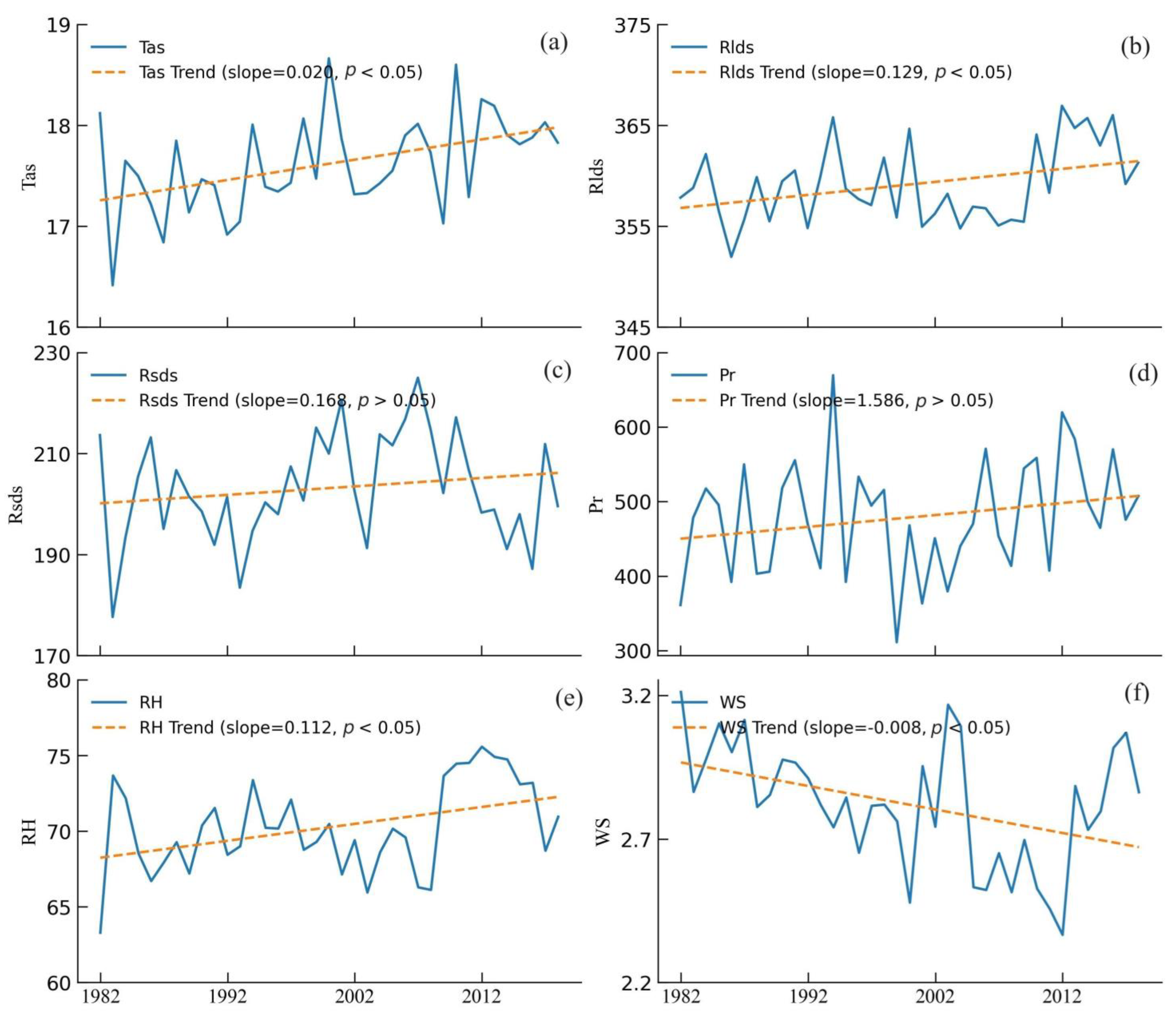
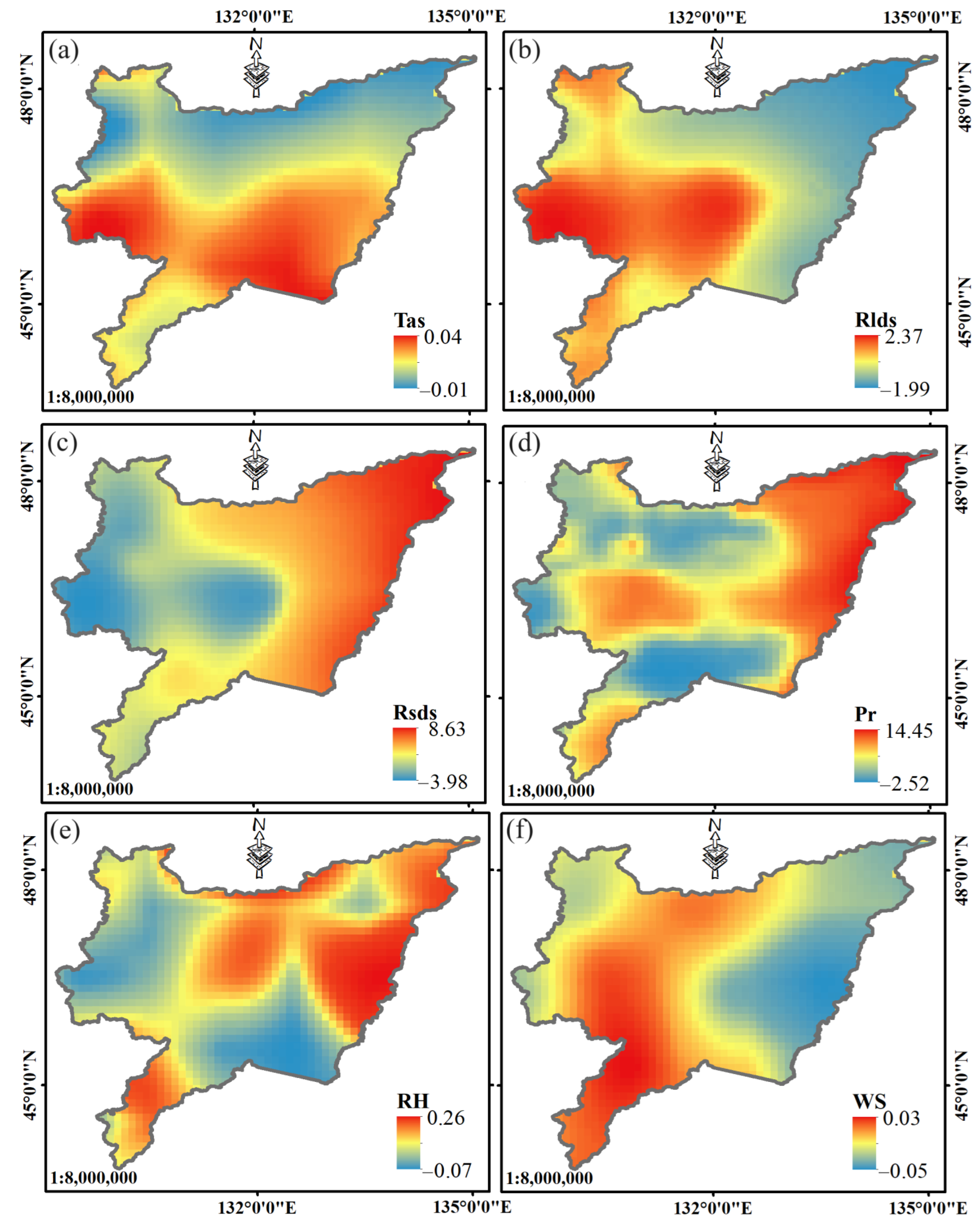
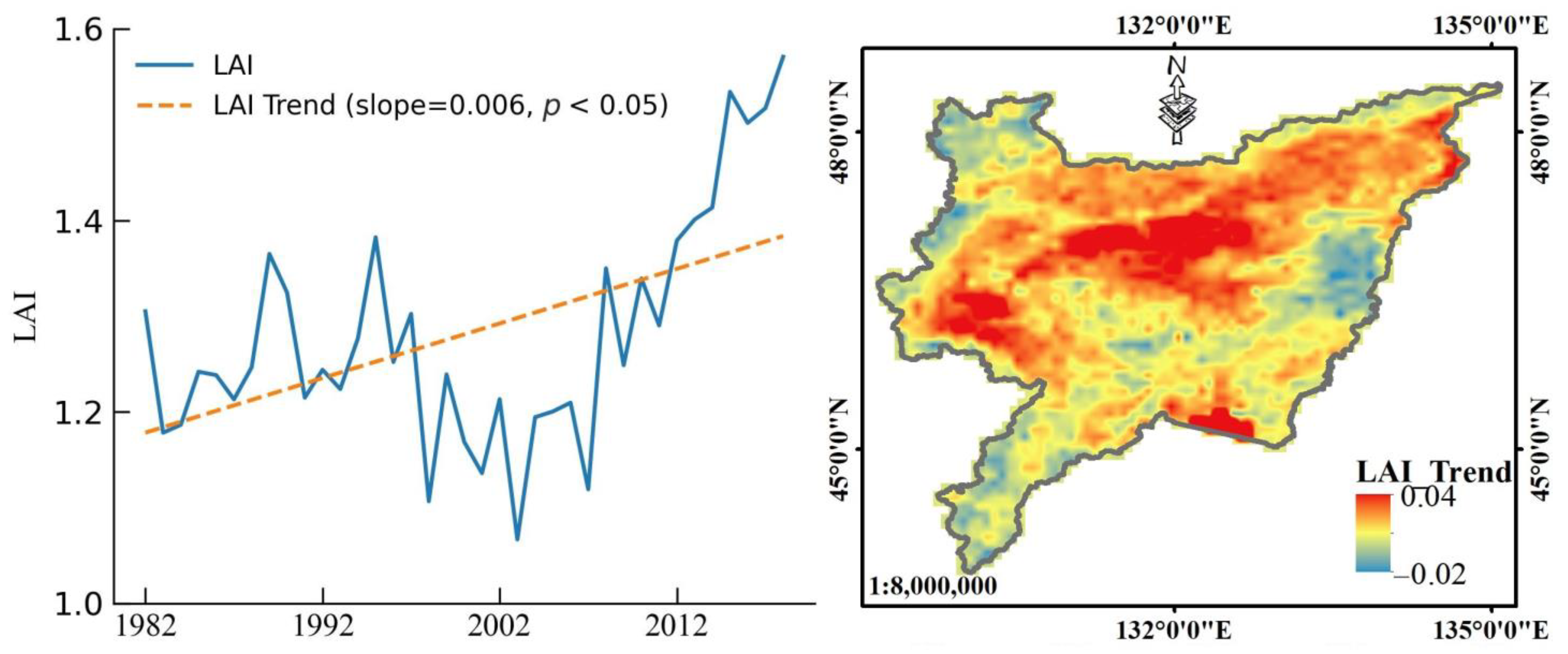

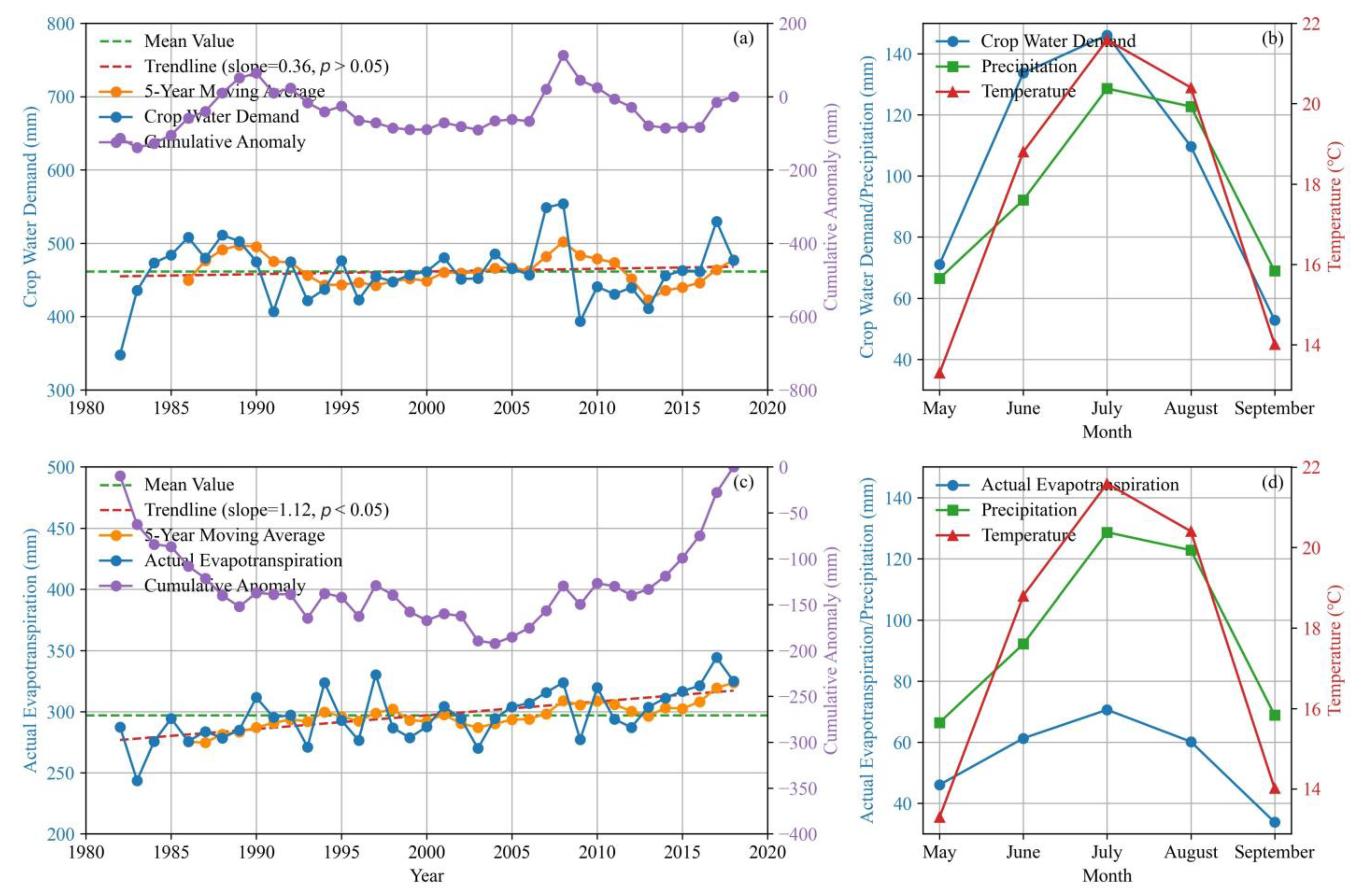
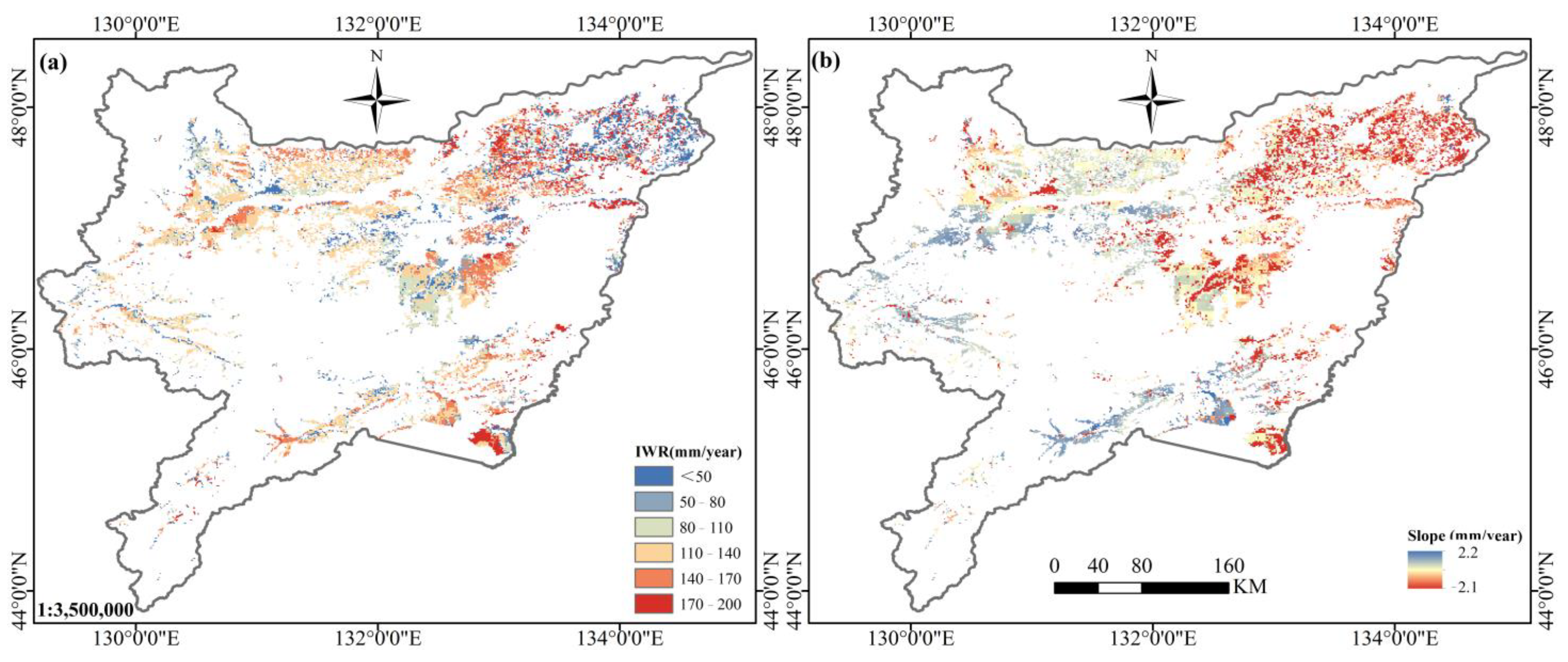

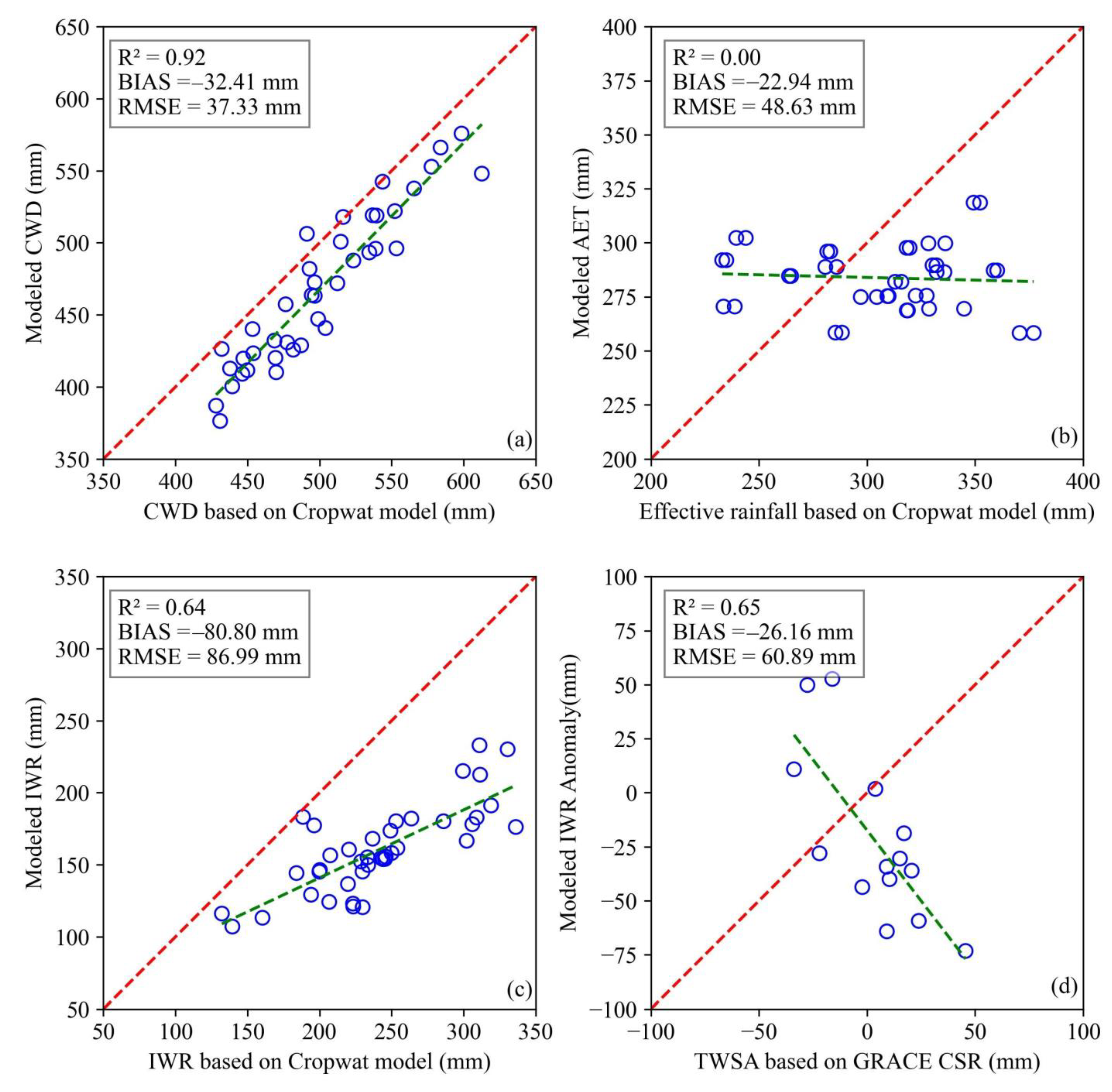
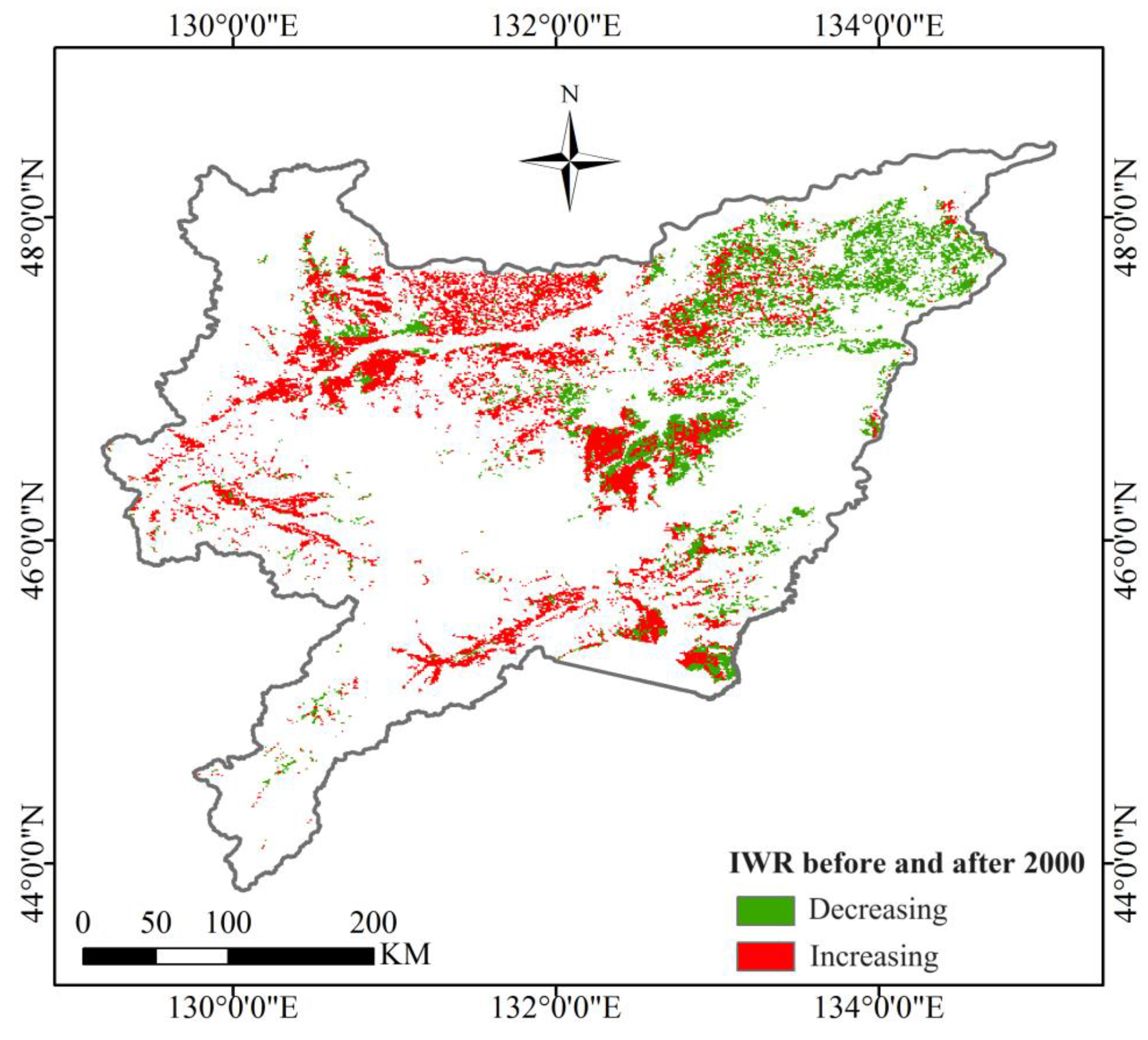
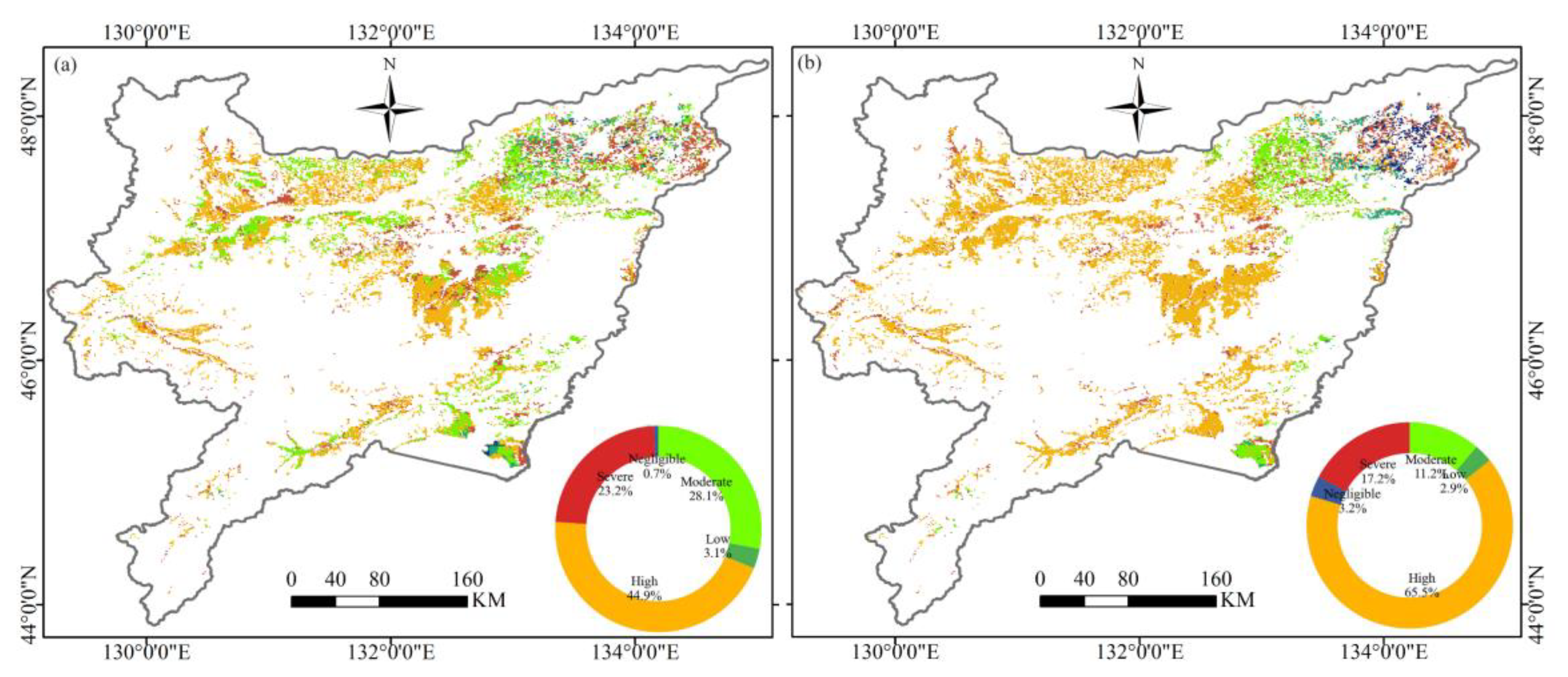

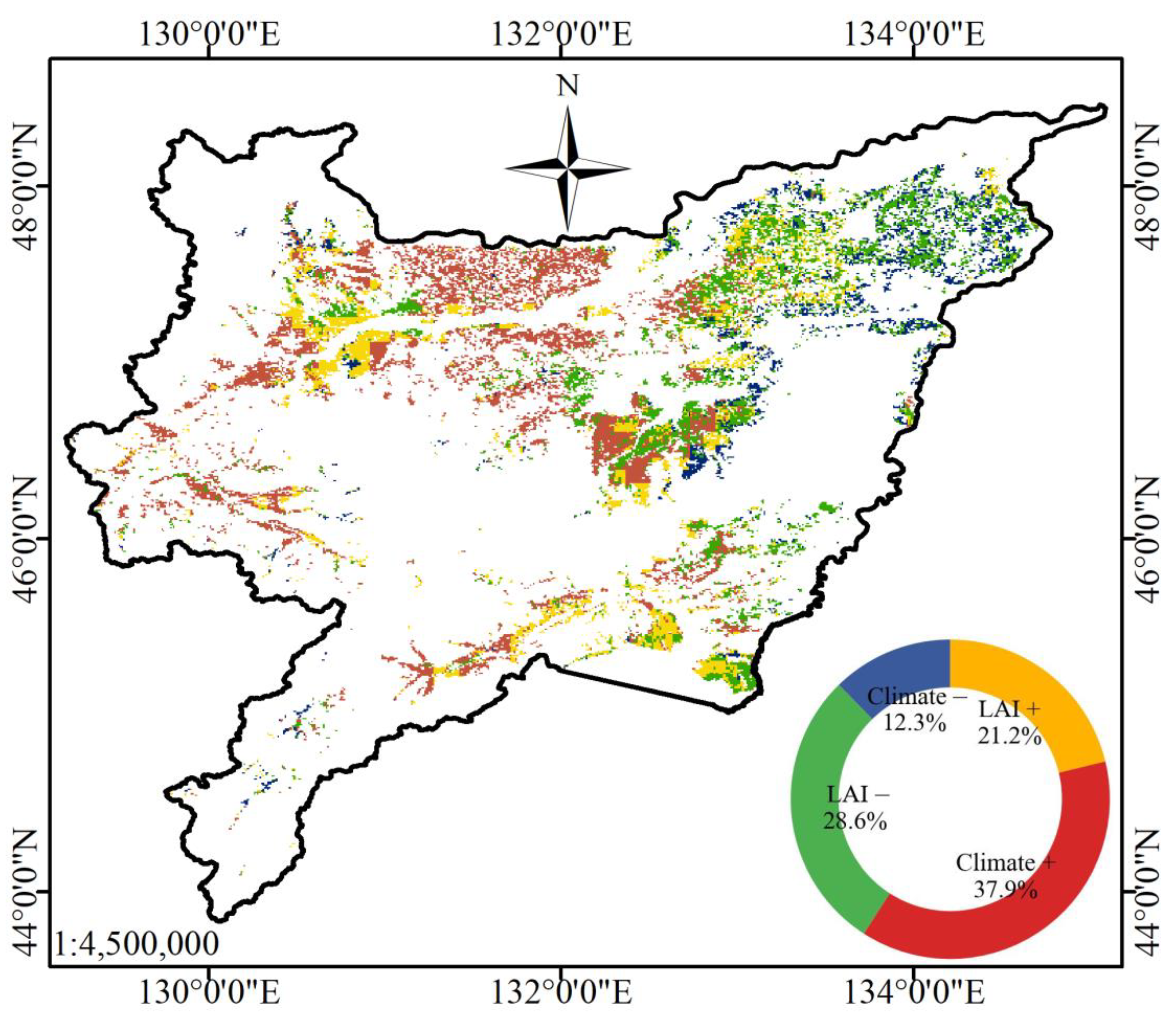
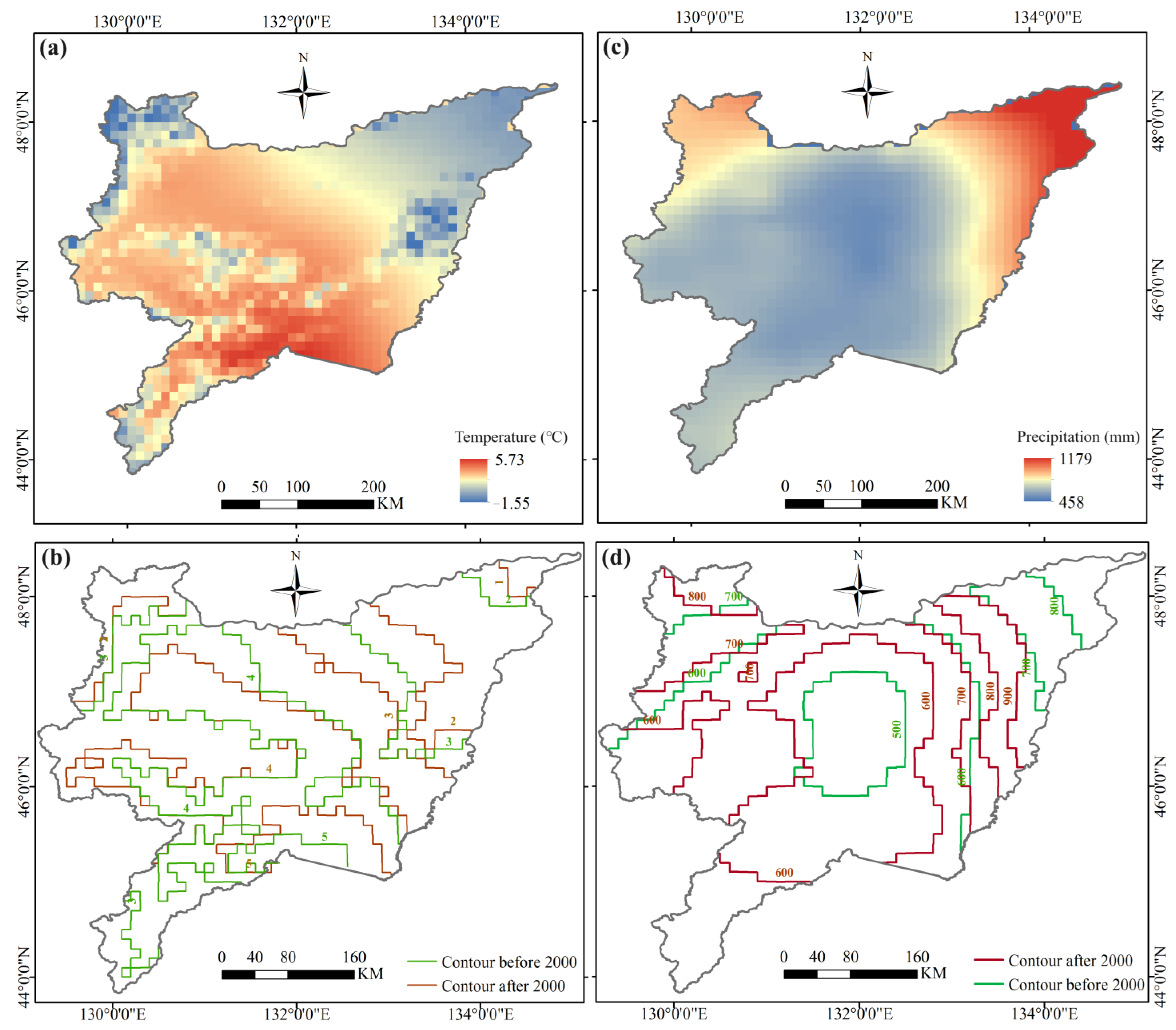
| Growth Stages | Middle Rice | Spring Maize | ||
|---|---|---|---|---|
| Date | Kc | Date | Kc | |
| Initial | 20 May–15 June | 1.05 | 25 April–20 May | 0.4 |
| Development | 16 June–15 July | 1.15 | 21 May–25 June | 0.8 |
| Middle | 16 July–30 August | 1.2 | 26 June–20 August | 1.12 |
| Late | 31 August–30 September | 0.95 | 21 August–15 September | 0.5 |
Disclaimer/Publisher’s Note: The statements, opinions and data contained in all publications are solely those of the individual author(s) and contributor(s) and not of MDPI and/or the editor(s). MDPI and/or the editor(s) disclaim responsibility for any injury to people or property resulting from any ideas, methods, instructions or products referred to in the content. |
© 2025 by the authors. Licensee MDPI, Basel, Switzerland. This article is an open access article distributed under the terms and conditions of the Creative Commons Attribution (CC BY) license (https://creativecommons.org/licenses/by/4.0/).
Share and Cite
Xu, C.; Zhang, W.; Fu, Z.; Chen, H.; Jiang, X.; Wang, S.; Zhang, B.; Zhang, Z. Long-Term Spatiotemporal Analysis of Crop Water Supply–Demand Relationship in Response to Climate Change and Vegetation Greening in Sanjiang Plain, China. Remote Sens. 2025, 17, 440. https://doi.org/10.3390/rs17030440
Xu C, Zhang W, Fu Z, Chen H, Jiang X, Wang S, Zhang B, Zhang Z. Long-Term Spatiotemporal Analysis of Crop Water Supply–Demand Relationship in Response to Climate Change and Vegetation Greening in Sanjiang Plain, China. Remote Sensing. 2025; 17(3):440. https://doi.org/10.3390/rs17030440
Chicago/Turabian StyleXu, Chi, Wanchang Zhang, Zhenghui Fu, Hao Chen, Xia Jiang, Shuhang Wang, Bo Zhang, and Zhijie Zhang. 2025. "Long-Term Spatiotemporal Analysis of Crop Water Supply–Demand Relationship in Response to Climate Change and Vegetation Greening in Sanjiang Plain, China" Remote Sensing 17, no. 3: 440. https://doi.org/10.3390/rs17030440
APA StyleXu, C., Zhang, W., Fu, Z., Chen, H., Jiang, X., Wang, S., Zhang, B., & Zhang, Z. (2025). Long-Term Spatiotemporal Analysis of Crop Water Supply–Demand Relationship in Response to Climate Change and Vegetation Greening in Sanjiang Plain, China. Remote Sensing, 17(3), 440. https://doi.org/10.3390/rs17030440








